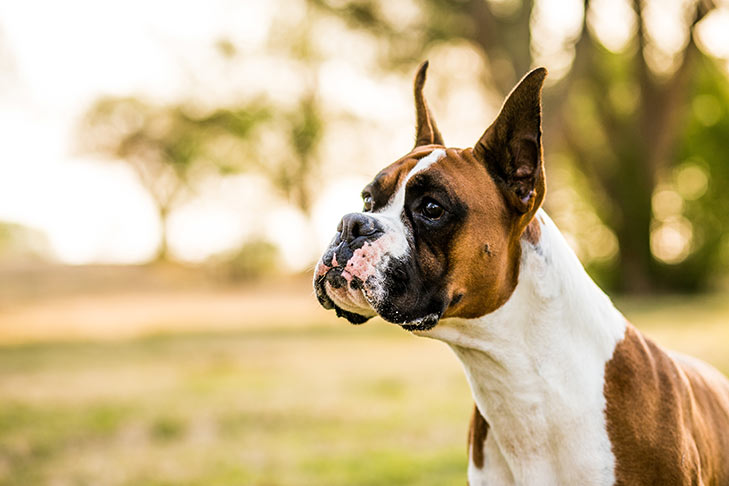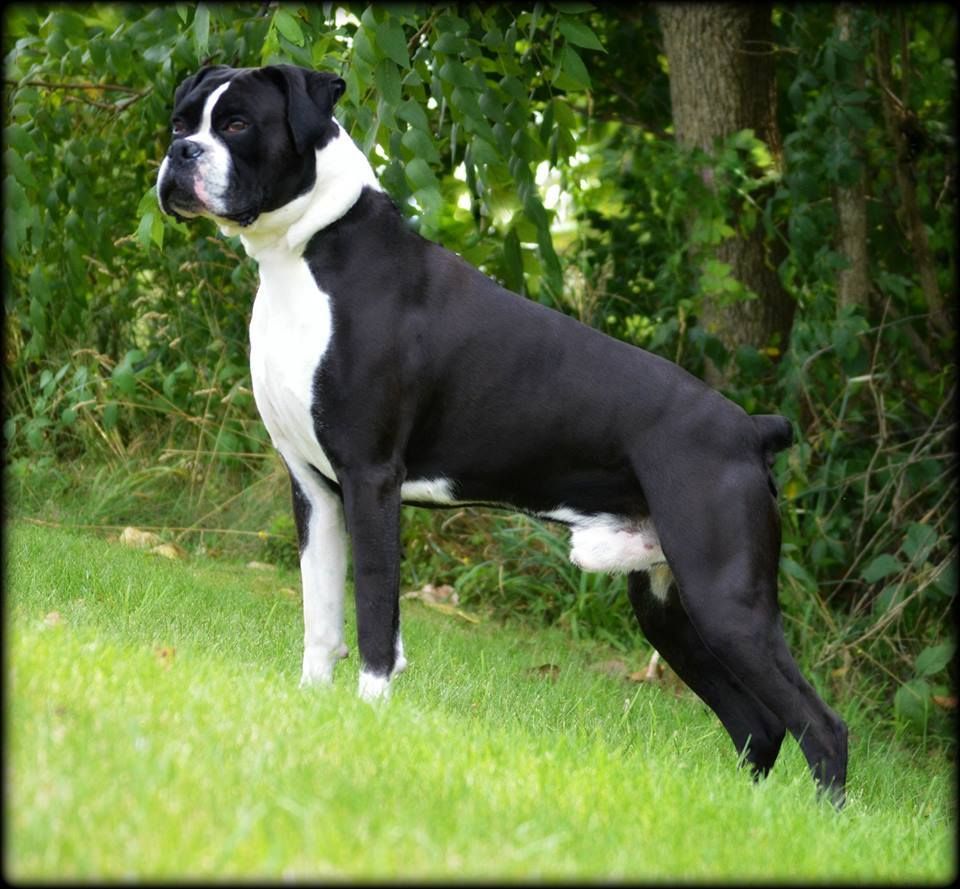Boxers are lively, charming and fun-loving dogs who are also gentle, sweet and gentle, yet loyal and secure. While the differences between females and males are not significant when it comes down to Boxers but there are some key characteristics to keep in mind which could influence your decision.

How do you determine which sexuality is best for you? Although there’s no definitive decision, there are a few factors that could help you make a choice. If you’re seeking a playful active, energetic, and secure dog, the majority of people believe that male Boxer is the best choice. If you’re looking for a pet who is more independent, well-organized, and less reckless A female Boxer is likely to be the best choice.
If you’ve determined that you think a Boxer is the right breed but you’re uncertain about whether you should choose either male or female check out our detailed guide.
At a Glance
Male Boxer
- The average height (adult): 5 to 25 inches
- Weight average (adult): 65-80 pounds
Female Boxer
- The average height (adult): 5 to 25 inches
- Weight average (adult): 65-80 pounds
Boxer Dog Overview

Boxers have been for a long time one of America’s most loved breeds of dogs and for many great reasons. They appear to possess everything: They’re loving, loyal, hardworking smart, charming, and adorable and have a lot of character and charm as well. They can appear to appear intimidating at first glance, however, when you spend some time with one of these dogs they quickly reveal their gentle and sweet side.
Boxers are commonly referred to by the name of”the “Peter Pan” of the world of dogs due to their seemingly never-ending puppyhood. They are active and playful well into their older years. In reality, Boxers aren’t considered fully mature until they turn three years old, which means they have one of the longest puppyhoods among all breeds of dogs. This makes them excellent pet dogs for families and great companions for kids, but the long time between puppies can make training difficult particularly for male Boxers.
If you’re thinking about the possibility of health insurance for your puppy You might want to take a look to Lemonade. It’s possible you’ll like the customizable insurance plans as well as the responsive customer service.
Male Boxer Dog Overview


Personality / Character
Like all breeds of dogs, male boxers are superior to females overall and show their dominance in a number of different ways, such as marking. The males also tend to be more lively and easily exuberant and, since they grow more slowly than females, they’re equally difficult to train. But that both female and male boxers are not mature until later and therefore training can be challenging for both genders.
Males are more observant than females and are less satisfied being at home. They tend to be more attached to their family members and would prefer to be with their human family as often as they can. In addition, male Boxers are well-known to be more assertive and outgoing than females, which makes them ideal family guardians.
Training
Male boxers are certainly more difficult in training than women because they are more likely to get easily distracted. Additionally, their dominant nature causes them to desire to be the top dog of the group. You’ll have been able to prove yourself the leader from the beginning to prevent this domineering behavior. Neutering your dog can aid in this.
Male Boxers have an innate tendency to be stubborn which can make training difficult for new owners or those who don’t have many years of familiarity with the breed. Boxers require a lot of perseverance, the consistency as well as a firm, but gentle touch for successful training. Although males are more difficult however they are not the only breed to be challenging. Boxer breed is generally recognized as being challenging when training.


Health & Care
The Boxer breed is generally known to be susceptible to a range of health problems that are genetic, many of which affect female and male Boxers. Certain conditions that males are the only ones susceptible to are preventable by neutering. This easy procedure can also be able to prevent other health issues too.
Common health issues include:
- Prostate cancer
- Cancer of the testicle
- Benign Prostatic Hyperplasia
- Aortic stenosis
- Right ventricular cardiomyopathy arrhythmogenic (“Boxer” cardiomyopathy)
- The elbow and hip dysplasia
- Hypothyroidism
- Myelopathy degenerative
- Gastric torsion
Breeding
Male Boxers reach sexual maturity between 12 and 15 months old. However, they are fertile as early as six months old. The majority of experts believe it’s best to wait until that a male has reached sexual maturity before breeding or, for optimal results, be at least two years old prior to breeding. Males remain fertile and healthy throughout their age of old However, it’s not advised to mate with a male who’s more than 10-12 years old of age, because they’ll have a lower quality of fertile sperm. It’s unlikely to result in any problems, but the breeding process may have less success when paired with younger Boxers.
Pros
- Affectionate
- Loyal
- Playful
- Protective
- It is expensive to neuter
Cons
- The more difficult part is training
- The process is slower and takes longer to mature.
- More prone to need than females
Female Boxer Dog Overview



Personality / Character
The most distinctive feature of female Boxers is their unique individuality. Females are much more comfortable being on their own than males and tend to be more reserved when it comes to strangers, and in general. A lot of owners of female Boxers have also reported that they’re less likely to get angry than males, but this is only anecdotal and is not always the case.
Females may not be so dominant as males females are aggressive at times particularly when a female dog is present. Female and male Boxers mature later than other breeds However, as females age faster than males, they’re more able to train.
Training
Because female Boxers are more mature than male Boxers and are more able to train generally however, like most Boxers however, they are sometimes a little stubborn. Females are often attracted to one particular person in the family, which can help in training. Whatever the sexuality, however, Boxers are a difficult breed to train and they require patience and gentleness during training if you wish to have to achieve any sort of achievement. The harsh training methods won’t work with the breed of dogs.


Health & Care
Female Boxers are susceptible to numerous problems as males but they are vulnerable to mammary cancer and uterine infections both of which are preventable by having a spay. Boxers rank fifth in the highest-risk breed of dogs to suffer from cancer, and it is among the top causes of death among the overall breed.
Common health issues include:
- Mammary cancer
- Uterine infections
- Aortic stenosis
- Right ventricular cardiomyopathy arrhythmogenic (“Boxer” cardiomyopathy)
- Elbow dysplasia and hip dysplasia
- Hypothyroidism
- Myelopathy degenerative
- Gastric torsion
Breeding
Female Boxers can be in the first cycle as early as 6 months old , but only have the sexual maturity to breed between 18 and 24 months. Many experts suggest not breeding until the female is about 2 years old , or has experienced at minimum 2 heat cycles.
Pros
- Smaller size
- More tolerant of dominance and aggression
- Not as attracted as males.
- It is easier to train
- Rapid to be mature
- More independent
Cons
- It is expensive to spay
- Males aren’t as romantic as females.
Which Gender Is Right for You?
Female and male Boxer Dogs are a great option for families. They are active affectionate, loving, as well as loyal, regardless of sexuality, and make great guardians of the family. It is important to keep in mind that every boxer is unique While sex may influence certain traits of a dog’s personality but a dog’s temperament, as well as temperament, are more influenced by their environment and their training than their sex.
There may be a female who challenges your authority in training, or a male who is extremely independent, which means they may not conform to the stereotyped Boxer characteristics. These characteristics should be considered as guidelines and not a set of rules. In this context however how do you decide between a male and a female?
The best method to decide for a puppy is to meet them in real life, and make your decision from the ones you see. It is possible that you are set on an adult male Boxer, but you go to visit the puppies and find a female that captures your heart! It’s a good choice but it all is a matter of personal preference. Whatever you choose Boxer you choose to train will require lots of dedication to training fitness, socialization, and socialization It’s very much responsibility, however one that can provide you with a lot of happiness and affection.